The world of jellyfish is full of prettiest, rare, and strange species. Their unique body shape, composition, and ability to live at different depths in different environments fetch researchers’ attention. This article will address some pretty jellyfish and the rarest jellyfish species. Some predators, jellyfish’s role in the marine ecosystem, features, and numerous jellyfish facts are on just your scrolling down the page.
Content Table
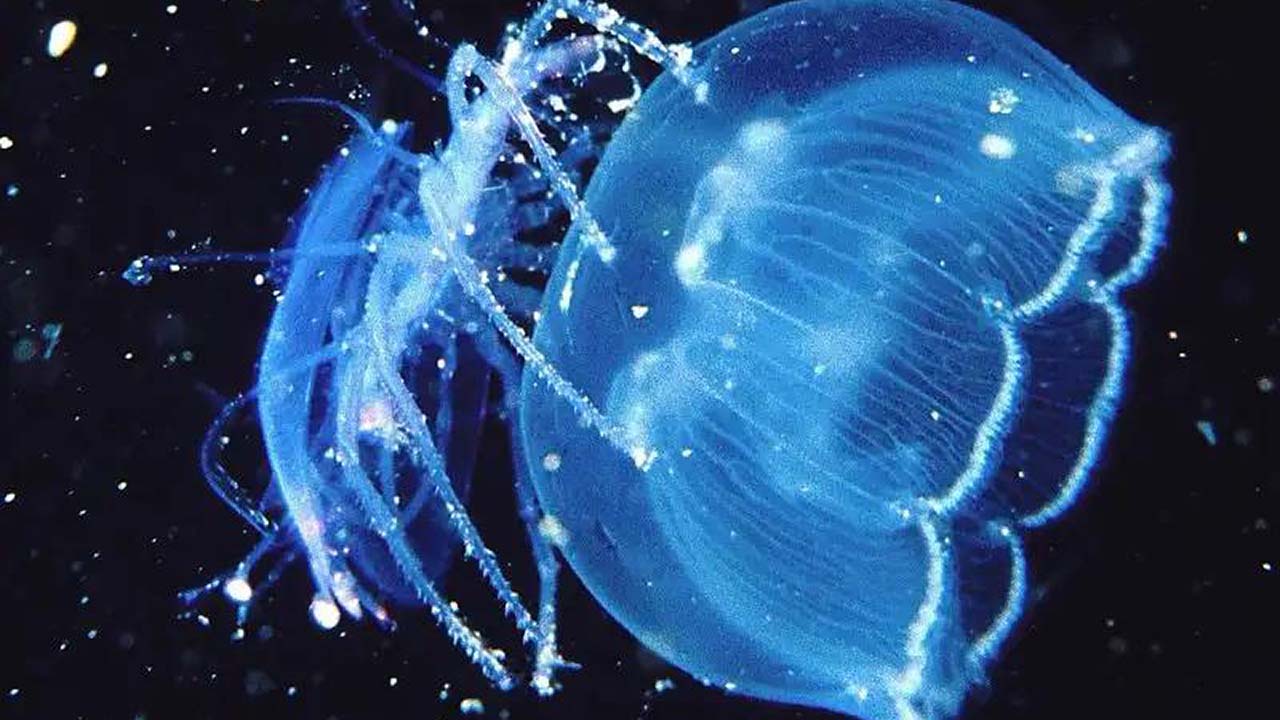
How Many Species of Jellyfish Are There?
Scientists and researchers have discovered more than 2,000 jellyfish species. The majority believe that there are potentially 1,000 undiscovered species. However, some researchers believe about 300,000 undiscovered jellyfish species.
Numerous Jellyfish species are beautiful and jaw-dropping, i.e., Moon Jellyfish, Blue Blubber Jellyfish, Flower Hat Jellyfish, etc. Some species are rare, i.e., spotted box jellyfish.
How Long Do Jellyfish Live?
On average, they live up to 1-3 years. However, the exact lifespan varies among different species. Moon jellyfish can live up to 8 to 12 months, while flame jellyfish can live only for four months. In the world of jellyfish, there is also a species, i.e., Turritopsis dohrnii, that surpasses the biological mortality. However, they can also die in case of starvation and physical injury.
Do You Know What Kind of This Jellyfish?
Different shapes and features stand each species out from the rest of the species. According to their features and appearance, some species are pretty. Some species are rare. All of these species are in the following.
Pretty Jellyfish
Lion’s Mane Jellyfish
| Cyanea capillata is the scientific name of this stunning jellyfish species. The largest known jellyfish also belong to it. They have thick-centered, dark-yellow to red bell. They have hundreds of tentacles that grow in 8 clusters. The tentacle’s coloration varies from brown to reddish color. The old tentacles turn into red color. They are present at 65 feet depth in cold waters of the Arctic and North Pacific Ocean. They swim long distances, especially when the water current is high. Their swarms are rare as they love to swim solo. They breed in early March and May. They are carnivores, i.e., small fish, zooplankton, shrimps, and other jellyfish. They eat and waste from the same opening. |
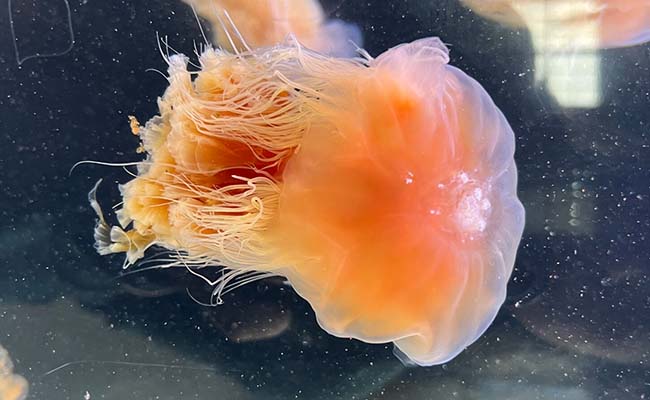 |
Firework Jellyfish
| Halitrephes maasi is the scientific name of the firework jellyfish. They are among the rare and prettiest species. They have very thin tentacles that reflect light, which appear like a firework. Moreover, these tentacles are frilled and appear like stars around the moon. They are present at 1,200 to 1,500 meters depth of the Indo-Pacific, Atlantic, Mediterranean, Antarctic, and Eastern Pacific Oceans. Their diet includes shrimp, fish, seaweed, and crabs. The radial canals help to uptake the food. |
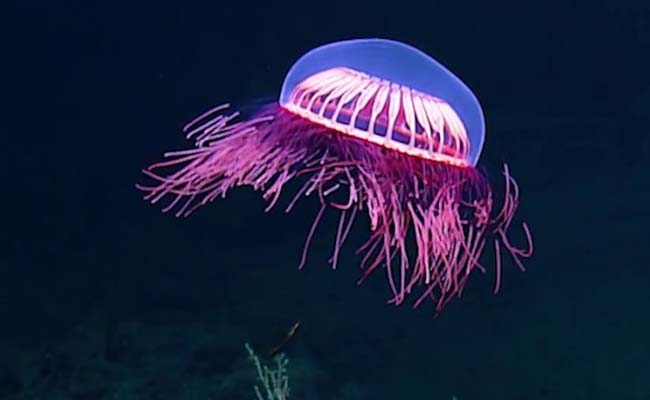 |
Deep Red Jellyfish
| Crossota millsae is another sparkling jellyfish commonly known as deep red jellyfish. It has an alien-like appearance with a vibrant red hue and reaches up to 2 cm in body size. It’s present below 1 kilometer in different parts of the Pacific, Arctic, Eastern Pacific, and Western Central Atlantic Ocean. They swim in short bursts, followed by sinking. For defense and warning, they use bioluminescence. They are carnivores, but it’s unknown what they consume as food. They reproduce sexually, and broods remain attached to the mother’s body until they reach the juvenile stage. |
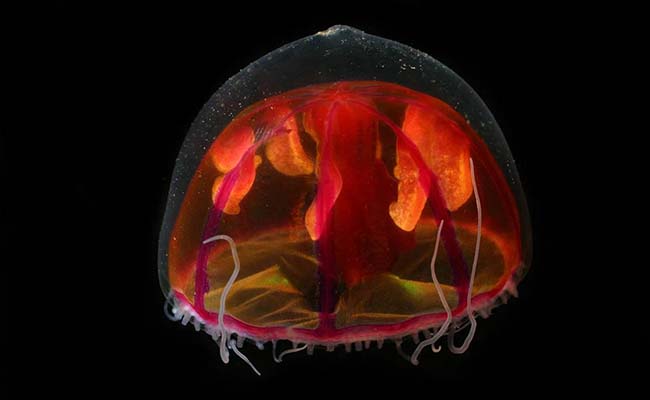 |
Floating Bell Jellyfish
| Phyllorhiza punctata is the scientific name of this white-spotted jellyfish. This medium-sized beauty has about half a meter dia bell. They appear like brownish-blue mushrooms with white spots. Although they lack tentacles, they have ribbon-like oral arms to feed on zooplankton. Moreover, they have a symbiotic relationship with photosynthetic algae. Algae grow inside this jellyfish. Algae provide oxygen and glucose in return for shelter and nutrient supply. Their natural habitat is the shallow coastal waters of Australia and Japan. However, now they are present in different parts of the world. |
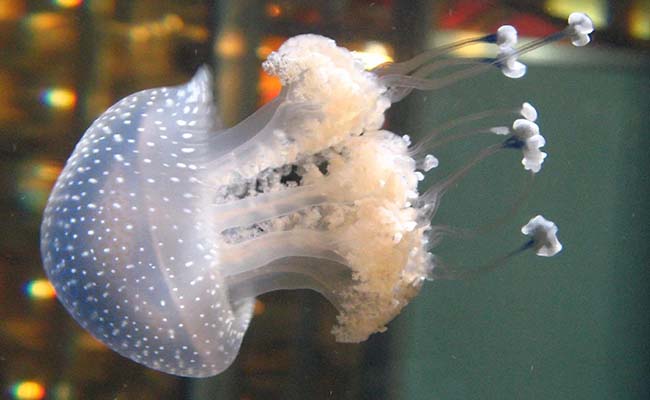 |
Fried Egg Jellyfish
| Phacellophora camtschatica is the scientific name of this cold-water dweller. The other common names for this species are white spotted jellyfish and Australian spotted jellyfish. This big-size beauty with more than 2 feet of bell dia and about 20 feet long tentacles. They live at 0 to 164 feet depth in the North Pacific Ocean. However, the evidence of their presence is also captured at 3700 depth. Its bell resembles the egg, i.e., white with a yellow center. The tentacles are purple-tinged white. They stay motionless most of the time during drifting. They always open their mouth and arms to prey. Their diet includes the zooplankton and other jellyfish, i.e., they are cannibals. |
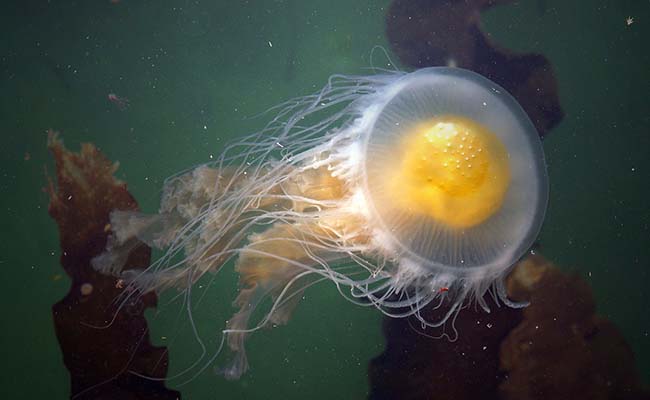 |
Rare Jellyfish
Giant Phantom Jellyfish
| Stygiomedusa gigantea is the scientific name of this Gian Phantom Jellyfish. They have an umbrella-shaped bell with about 1 meter dia. Their plaint tissues allow 4 to 5 times more stretching than their original size. They have four arms with kite-like shapes that can grow up to 10 meters. This deep-sea rare beauty fulfills their appetite with plankton and small fish. Researchers believe that they are present throughout the globe. However, their encounter with researchers is very rare. They have been seen about 115 times in the last 110 years. The last time a 33-foot-long arms were seen and filmed was in 2021, near Monterey Bay, California. |
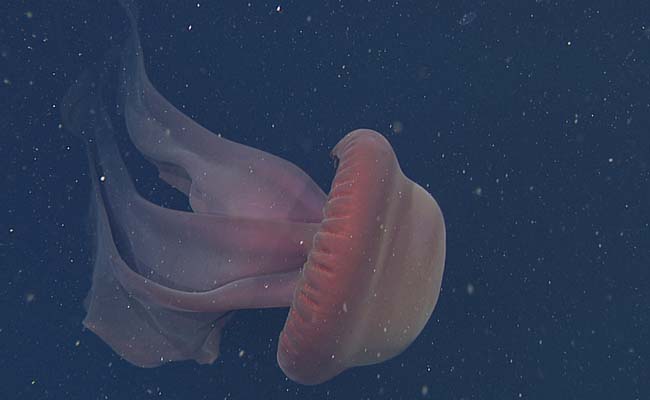 |
Spotted Box Jellyfish
| Chirodectes macalatus is the scientific name of this rarest Western Central Pacific native. This giant has about 24 eyes for four different roles. They have spotted box-like bodies with large tentacles. Box jellyfish usually have 60 tentacles in 4 clusters. Their family, i.e., box jellyfish, usually consume small fish, worms, and crustaceans. They were only seen twice in the wild, i.e., in 1997 and 2022. A scuba diver encountered and filmed this. Initially, it was declared as a new species. However, after examining the video, it is classified in its formal position. |
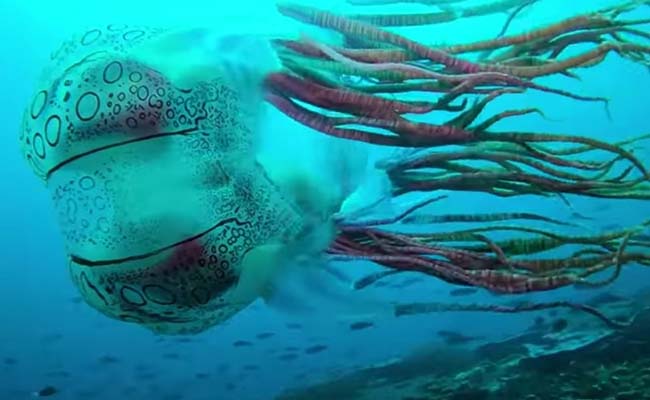 |
Pink Meanie
| Drymonema larsoni is the scientific name of this rare pink beauty. They have 3 feet diameter and 150 stinging tentacles. They are carnivores and eat other jellyfish, especially love to feast on moon jellyfish. Their sting is painful but not deadly for humans. A 70-foot-long tentacle jellyfish from this species is observed. They appear once every ten years at Baldwin County beaches. They are native to the Atlantic and Pacific Oceans. Their presence was noticed in 2000. Scientists made them into an entirely new species in 2011. |
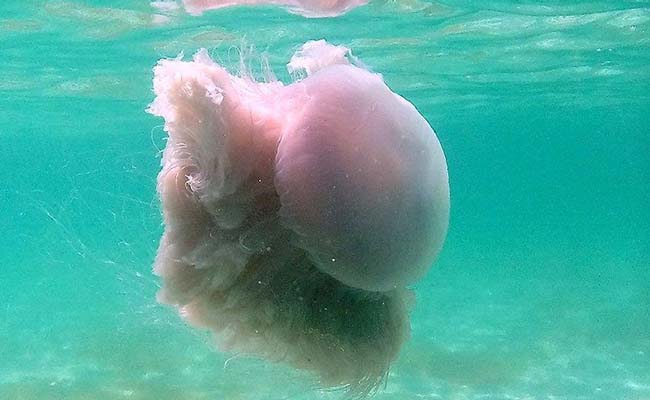 |
Bonaire Banded Box Jellyfish
| Tamoya ohboya is the scientific name of Bonaire banded box jellyfish. Internet voting was held for its name. Nematocyst warts cover this 15 cm long box-shaped body. It has only four tentacles, i.e., each extends from a different corner. The tentacles are dark brown to reddish-orange banded in color. They swim about 4.6 miles per hour. This active cornvorse hunter eats crustaceans, small fish, worms, and other small species. About 51 sightings in the Caribbean Sea and 45 on the western shore of Bonaire are reported. They are venomous. Since 1989, it has stung about three people. |
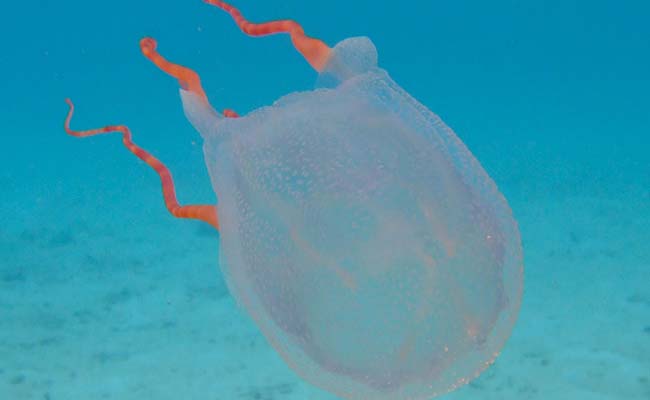 |
St. George’s Cross Medusa
| Santjordia pagesi is the scientific name of this rare jellyfish species. They are spotted twice, i.e., 2001 and 2020. This rare Medusa species was discovered near Japan. It has a circular body with an umbrella shape. The cross-shaped bright red umbrella is 3 inches tall with a 4-inch width. It has numerous tentacles, i.e., 240. | 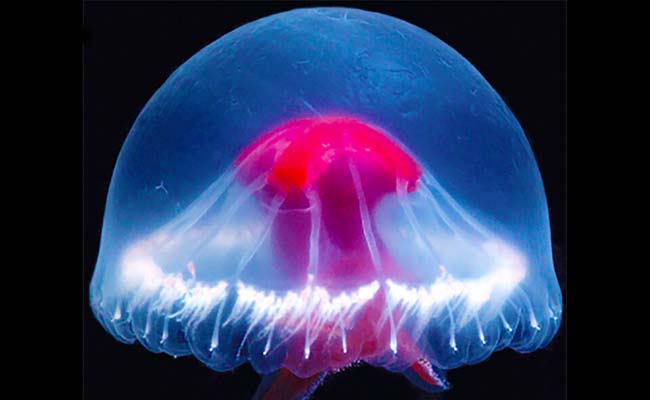 |
Do Jellyfish Get Eaten by Anything
Yes, there are several jellyfish predators in the marine environment. The list of the predators is as follows:
| Seabirds | Crabs | Grey triggerfish | Nudibranchs |
| Ocean sunfish | Turtles | Whale sharks | Anemones |
Features of Jellyfish
- They have soft, bag-like umbrellas resembling bodies.
- Jellyfish are floating well in the water because their body consists of 95 to 98% of water.
- They have a mouth in the center of their body.
- The umbrella head is known as a bell.
- The long string growing out of the bell is called tentacles.
- 70% of jellyfish are poisonous, and their presence near humans is not good.
- They have an eye-like structure to find their habitat.
- Jellyfish extended oral lips, i.e., oral arms, to inject the poison into the prey’s body.
- They come in various sizes, i.e., microscopic to macroscopic sizes.
- They do not have bones and hearts.
- Different species are present at different sea depths.
- They are present around the globe.
How Jellyfish Survive in the Ocean?
Several reasons keep jellyfish alive in harsh marine ecosystems. Some of them are in the following.
- Their bodies consist of 98% of water. It keeps them transparent and away from predators’ eyes.
- Gelatinous bodies give them natural buoyancy. They can control the water concentration in their body. This way, they can adjust their buoyancy, i.e., float or sink.
- They have stinging tentacles. They inject it into other bodies and paralyze them.
- They absorb oxygen from the top layer of jellyfish and absorb it in the rest of the body. In this way, they live without a heart, lungs, and blood.
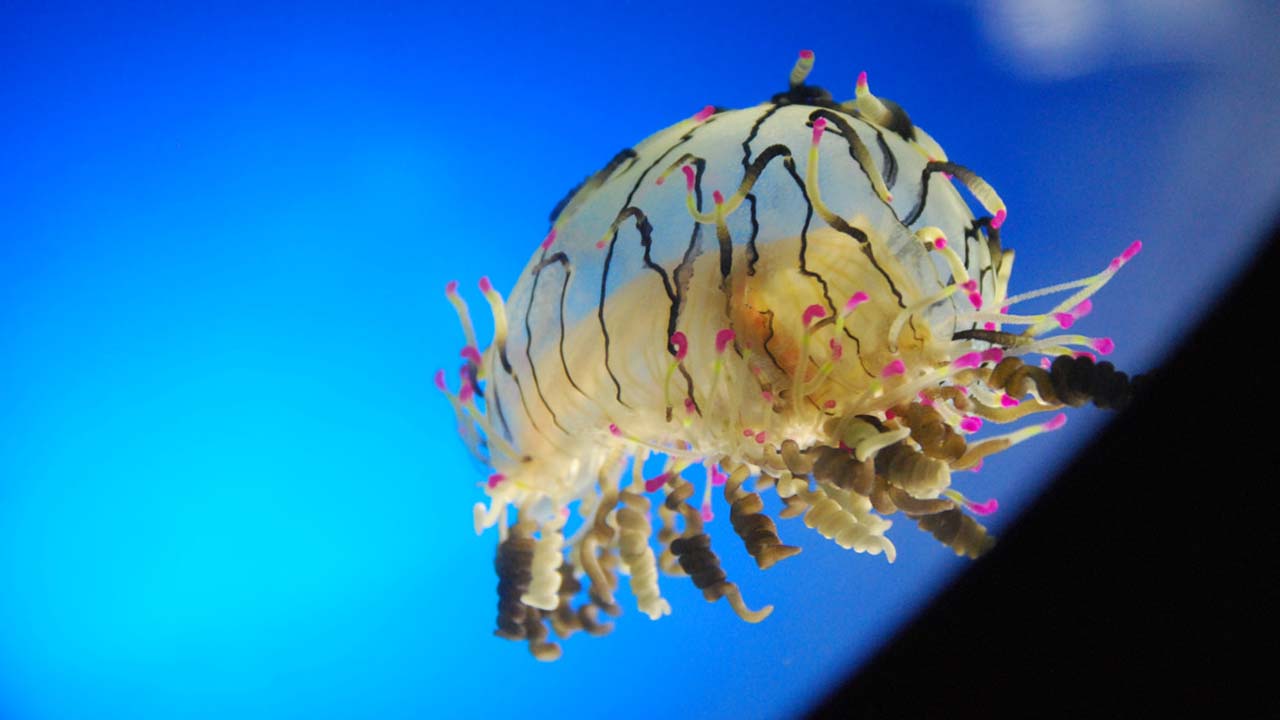
Why Do Jellyfish Exist?
Jellyfish play a vital role in marine ecosystems.
Maintain Foodchain Hierarchy
Jellyfish help to maintain the marine food chain hierarchy. Jellyfish eat multiple zooplankton and fish species. In the same way, numerous marine species, i.e., sea turtles, sunfish, and some other fish species, consume them as a food source.
Nutrient Cycling
They help in nutrient cycling. They intake food debris, mucus, and fecal pellets. After that, they move deeper into the water column and excrete it. A study revealed that the 10% nitrogen and 25% phosphate needs of phytoplanktons are fulfilled by jellyfish excretion. Other than excretion, decomposing their dead bodies on the sea floor also helps the nutrient-cycling marine ecosystem.
Gingerbread House
They also provide food and shelter to juveniles. Researchers call it the “gingerbread house” effect. Small fish remain close to the bell of jellyfish. In this way, they keep themselves away from predators. Moreover, they also get food for living.
Are Jellyfish a Kind of Plankton?
Yes, jellyfish is a kind of plankton, i.e., zooplankton. Usually, plankton is microscopic, but some species, like jellyfish and crustaceans, are macroscopic plankton. They spend complete or partial life drifting.
- They can clone themselves. The two-sliced jellyfish body can turn into two jellyfish.
- Some jellyfish species can glow in the dark.
- Box jellyfish can see 360 degrees.
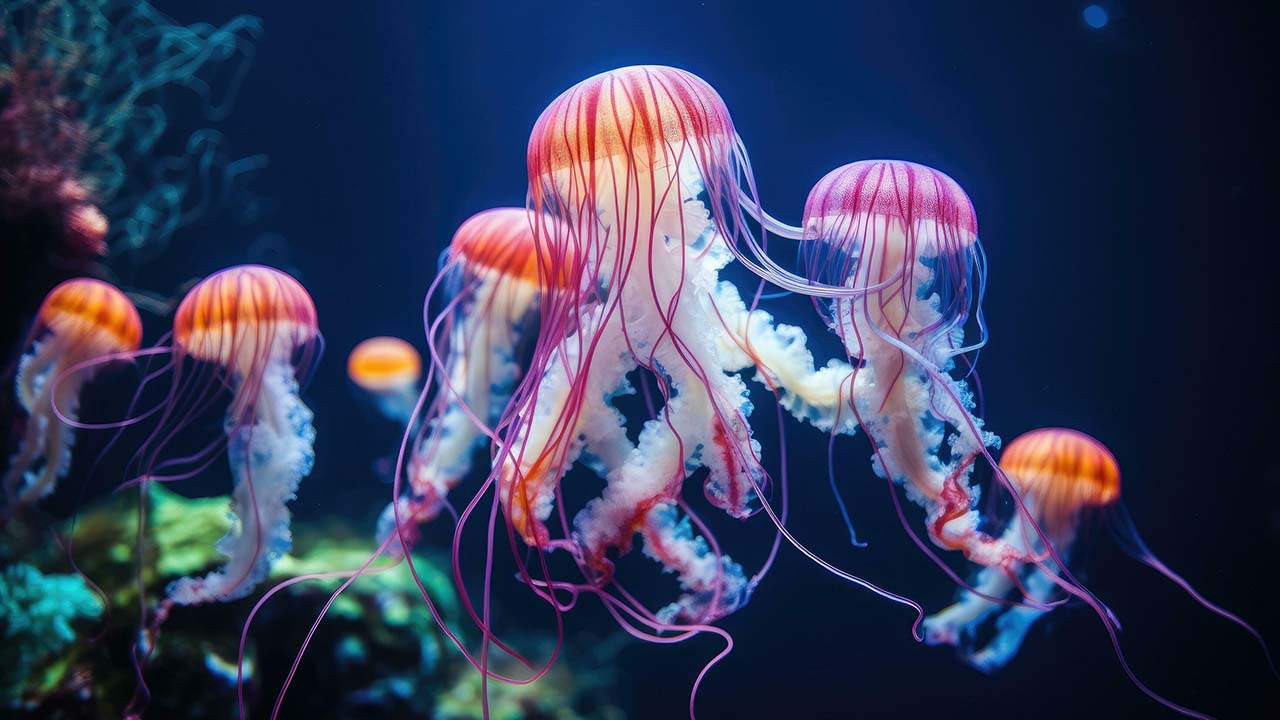
In Summary
There are thousands of known jellyfish species and thousands seeking researchers’ attention. There are some beautiful jellyfish species, i.e., fried egg bell jellyfish, firework jellyfish, etc. Some species are seen once or twice or are seldom, i.e., spotted box jellyfish, giant phantom jellyfish, etc. Some species, i.e., sea turtles, love to eat them. However, they save themselves in the harsh marine ecosystem with many gifted abilities. They are essential for the marine ecosystem with many exclusive roles.


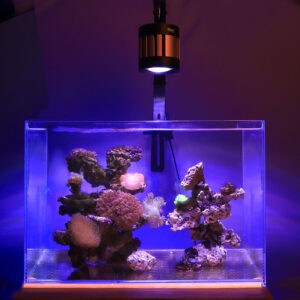
Leave a comment